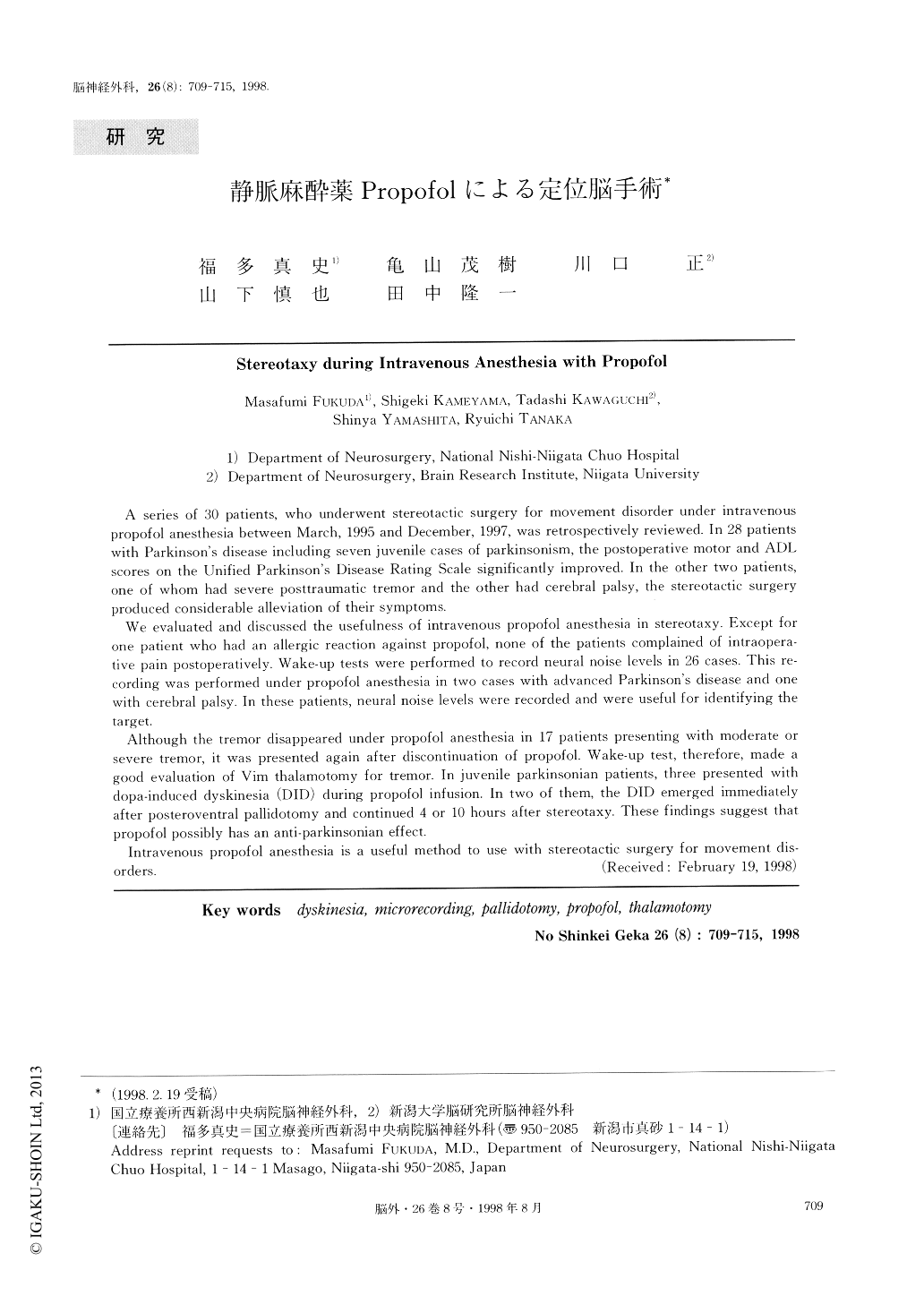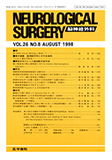Japanese
English
- 有料閲覧
- Abstract 文献概要
- 1ページ目 Look Inside
I.はじめに
Propofol(Diprivan® ZENECA)は静脈麻酔薬の1つであり,作用時間がきわめて短く,反復投与でも体内蓄積性が少ないことから,手術時間が長い脳神経外科手術の全身麻酔でも広く用いられるようになってきた14,18,19,21).われわれはこのpropofolの薬理学的特徴を利用し,不随意運動に対する定位脳手術の際にwake-upテストを行うことによって,少しでも患者の苦痛を軽減するよう試みてきた7).今回propofolによる静脈麻酔を用いて定位脳手術を施行した症例をretrospectiveに調査し,その有用性について検討した.
また,パーキンソン病患者においてpropofolの静脈内投与により,一時的に振戦が止まったという報告1)や,術中L-DOPAを服用していないにも関わらず,術前のL-DOPA誘発ジスキネジア(dopa-induced dyskinesia,以下DIDと略す)と同じような不随意運動を生じたという報告9)が散見される.われわれの症例においても,このようなpropofolの抗パーキンソン効果について検討し,その作用機序について考察する.
A series of 30 patients, who underwent stereotactic surgery for movement disorder under intravenouspropofol anesthesia between March, 1995 and December, 1997, was retrospectively reviewed. In 28 patientswith Parkinson's disease including seven juvenile cases of parkinsonism, the postoperative motor and ADLscores on the Unified Parkinson's Disease Rating Scale significantly improved. In the other two patients,one of whom had severe posttraumatic tremor and the other had cerebral palsy, the stereotactic surgeryproduced considerable alleviation of their symptoms.
We evaluated and discussed the usefulness of intravenous propofol anesthesia in stereotaxy. Except forone patient who had an allergic reaction against propofol, none of the patients complained of intraopera-tive pain postoperatively, Wake-up tests were performed to record neural noise levels in 26 cases. This re-cording was performed under propofol anesthesia in two cases with advanced Parkinson's disease and onewith cerebral palsy. In these patients, neural noise levels were recorded and were useful for identifying thetarget.
Although the tremor disappeared under propofol anesthesia in 17 patients presenting with moderate orsevere tremor, it was presented again after discontinuation of propofol. Wake-up test, therefore, made agood evaluation of Vim thalamotomy for tremor. In juvenile parkinsonian patients, three presented withdopa-induced dyskinesia (DID) during propofol infusion. In two of them, the DID emerged immediatelyafter posteroventral pallidotomy and continued 4 or 10 hours after stereotaxy. These findings suggest thatpropofol possibly has an anti-parkinsonian effect.
Intravenous propofol anesthesia is a useful method to use with stereotactic surgery for movement dis-orders.

Copyright © 1998, Igaku-Shoin Ltd. All rights reserved.


